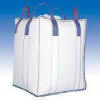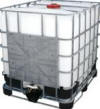| Anmol Chemicals is the pioneer manufacturers of Calcium Chloride, Pharmaceutical Excipients Food & Flavor chemicals in India. We offer Halal and Kosher Calcium Chloride made in an ISO9001, ISO22000 (FSSC22000) cGMP and GLP certified facility. Our group has several manufacturing facilities spread across the world, supported by toll manufacturers and representatives in UAE, Europe, Africa, USA, China and has several associated manufacturing facilities spread across India. All the Information on Physics, Chemistry, Applications, Uses and Technology on Manufacture of Calcium Chloride is in these pages. |
| The units have one or more of the certifications like FDA GMP, ISO 9001, ISO 22000, HACCP, REACH, Kosher & Halal |
CALCIUM CHLORIDE ANHYDROUS Fused SDS GHS, MSDS Sheet
Calcium Chloride Fused Anhydrous Brine Solution
Calcium Chloride IP BP USP
Calcium Chloride FCC Food grade ACS AR Analytical reagent grade
Calcium Chloride Dihydrate Hexahydrate
For MSDS Sheet Click
SDS GHS MSDS of Calcium Chloride Fused Dihydrate Manufacturers
SDS GHS MSDS of Calcium Chloride Liquid Brine, Solution & Hexahydrate Manufacturers
YOU ARE HERE: MSDS of Calcium Chloride Anhydrous Manufacturers
Calcium Chloride Anhydrous SDS MSDS Sheet, Material Safety Data Sheet
1. Product Identification
Synonyms: Calcium Dichloride; Calcium Di Chloride
CAS No.: 10043-52-4
EINECS: EC Number: 233-140-8.
Molecular Weight: 110.98
Chemical Formula: CaCl2 (Calcium Chloride Anhydrous)
Relevant Uses: Industrial use only.
2. Hazards Identification
GHS, Globally Harmonized System Classification in accordance with 29 CFR 1910
Classification according to Regulation (EC) No 1272/2008
Skin irritation Category 2)
Serious eye damage/eye irritation Category 2A
Specific target organ toxicity, single exposure; Respiratory tract irritation Category 3
Labeling according to GHS & Regulation (EC) No 1272/2008
GHS Label Elements Irritant |
Signal Words: Warning
Hazard statements:
H315: Causes skin irritation.
H319: Causes serious eye irritation.
H335: May cause respiratory irritation.
Precautionary statements:
P261: Avoid breathing dust/ fume/ gas/ mist/ vapors/ spray.
P262: Do not get in eyes, on skin, or on clothing.
P264 Wash skin thoroughly after handling.
P280: Wear protective gloves/protective clothing/eye protection/face protection.
P362: Take off contaminated clothing and wash before reuse.
P302+P352: IF ON SKIN: Wash with soap and water.
P305+P351+P338: IF IN EYES: Rinse cautiously with water for several minutes. Remove contact lenses, if present and easy to do. Continue rinsing.
P332+P313: If skin irritation occurs: Get medical advice/attention.
P337+P313: If eye irritation persists: Get medical advice/ attention.
Classification according to EU Directives 67/548/EEC or 1999/45/EC:
Symbol:Xi irritant
Risk Phrases: R36/38- Irritating to eyes and skin..
For the full text of the S-statements R-phrases mentioned in this Section, see Section 16.
3. Composition/Information on Ingredients
Ingredient: Calcium Chloride Anhydrous
CAS No.: 10043-52-4
EINECS: EC Number: 233-140-8.
Percent: 93 - 100%
4. First Aid Measures
Inhalation: Remove to fresh air. If not breathing, give artificial respiration. If breathing is difficult, give oxygen. Get medical attention.
Ingestion: Induce vomiting immediately as directed by medical personnel. Never give anything by mouth to an unconscious person. Get medical attention.
Skin Contact: Wipe off excess material from skin then immediately flush skin with plenty of water for at least 15 minutes. Remove contaminated clothing and shoes. Get medical attention. Wash clothing before reuse. Thoroughly clean shoes before reuse.
Eye Contact: Immediately flush eyes with plenty of water for at least 15 minutes, lifting lower and upper eyelids occasionally. Get medical attention immediately.
Note to Physician: Oral ingestion may cause serum acidosis.
5. Fire Fighting Measures
Fire: Calcium Chloride is not considered to be a fire hazard.
Explosion: Calcium Chloride is not considered to be an explosion hazard.
Fire Extinguishing Media: Use water spray, alcohol-resistant foam, dry chemical or carbon dioxide. Use means suitable for extinguishing surrounding fire.
Special Information: In the event of a fire, wear full protective clothing and NIOSH-approved self-contained breathing apparatus with full face piece operated in the pressure demand or other positive pressure mode. At high temperatures or when moistened under fire conditions, it may produce toxic or irritating fumes.
6. Accidental Release Measures
Small Spill: Use appropriate tools to put the spilled solid in a convenient waste disposal container. Finish cleaning by spreading water on the contaminated surface and dispose of according to local and regional authority requirements.
Large Spill: Use a shovel to put the material into a convenient waste disposal container. Avoid dust formation. Avoid breathing vapors, mist or gas. Ensure adequate ventilation. Avoid breathing dust. Finish cleaning by spreading water on the contaminated surface and allow to evacuate through the sanitary system.
7. Handling and Storage
Keep in a tightly closed container, stored in a cool, dry, ventilated area. Protect against physical damage. Moist calcium chloride and concentrated solutions can corrode steel. When exposed to the atmosphere, calcium chloride will absorb water and form a solution. Avoid dust formation. Avoid breathing vapors, mist or gas. Ensure adequate ventilation. Avoid breathing dust.
8. Exposure Controls/Personal Protection
Airborne Exposure Limits: None established.
Ventilation System: A system of local and/or general exhaust is recommended to keep employee exposures as low as possible. Local exhaust ventilation is generally preferred because it can control the emissions of the contaminant at its source, preventing dispersion of it into the general work area. Please refer to the ACGIH document, Industrial Ventilation, A Manual of Recommended Practices, most recent edition, for details.
Personal Respirators (NIOSH Approved): For conditions of use where exposure to dust or mist is apparent and engineering controls are not feasible, a particulate respirator (NIOSH type N95 or better filters) may be worn. If oil particles (e.g. lubricants, cutting fluids, glycerin, etc.) are present, use a NIOSH type R or P filter. For emergencies or instances where the exposure levels are not known, use a full-face positive-pressure, air-supplied respirator. WARNING: Air-purifying respirators do not protect workers in oxygen-deficient atmospheres.
Skin Protection: Wear protective gloves and clean body-covering clothing.
Eye Protection: Use chemical safety goggles and/or full face shield where dusting or splashing of solutions is possible. Maintain eye wash fountain and quick-drench facilities in work area.
Other Control Measures: Maintain good housekeeping in work area. Dust deposits on floors and other surfaces may pick up moisture and cause the surfaces to become slippery and present safety hazards.
9. Physical and Chemical Properties
Appearance: It is white or gray-white granules.
Odor: It is odorless.
Solubility: It is freely soluble in water, exothermic.
Density: It has specific gravity of 2.15
pH: 8 - 9 Aqueous solution of Calcium Chloride
% Volatile by volume @ 21C (70F): 0
Boiling Point: > 1600C (> 2912F)
Melting Point: 772C (1422F)
10. Stability and Reactivity
Stability: Calcium Chloride is stable under ordinary conditions of use and storage. Substance will pick up moisture from the air and go into solution if exposed in open containers.
Hazardous Decomposition Products: It emits toxic chlorine fumes when heated to decomposition. Calcium Chloride may form hydrogen chloride in presence of sulfuric or phosphoric acids or with water at elevated temperatures.
Hazardous Polymerization: Will not occur.
Incompatibilities: Methyl vinyl ether, water, zinc, bromine trifluoride, mixtures of lime and boric acid, barium chloride, and 2-furan percarboxylic acid. Metals will slowly corrode in aqueous calcium chloride solutions. Aluminum (and alloys) and yellow brass will be attacked by calcium chloride.
Conditions to Avoid: Incompatibles.
11. Toxicological Information
Toxicity to Animals: Oral rat LD50: 2301 mg/kg on Anhydrous CaCl2 basis.
Acute toxicity: Not classified
Skin corrosion/irritation: Not classified
Serious eye damage/irritation: Causes serious eye irritation.
Respiratory or skin sensitization: Not classified
Germ cell mutagenicity: Not classified
Carcinogenicity: No component of this product present at levels greater than or equal to 0.1% is identified as probable, possible or confirmed human carcinogen by IARC.
Reproductive toxicity: Not classified
Specific target organ toxicity (single exposure): Not classified
Specific target organ toxicity (repeated exposure): Not classified
Aspiration hazard: Not classified
Symptoms/injuries after inhalation: EXPOSURE TO HIGH CONCENTRATIONS: Coughing. Slight irritation. Runny nose.
Symptoms/injuries after skin contact: Slight irritation.
Symptoms/injuries after eye contact: Irritation of the eye tissue. Visual disturbances.
12. Ecological Information
Toxicity to fish: LC50 - Lepomis macrochirus - 10650 mg/l - 96 h
Toxicity to daphnia and other aquatic invertebrates: EC50 - Daphnia magna (Water flea) - 2400 mg/l - 48 h
Environmental Fate: Based on available information for Calcium Chloride anhydrous, this material will not biodegrade or bio accumulate.
Environmental Toxicity: The LC50/96-hour values for fish are over 100 mg/l.
Results of PBT and vPvB assessment: This substance/mixture contains no components considered to be either persistent, bioaccumulative and toxic (PBT), or very persistent and very bioaccumulative (vPvB) at levels of 0.1% or higher.
13. Disposal Considerations
Whatever cannot be saved for recovery or recycling should be managed in an appropriate and approved waste disposal facility. Processing, use or contamination of this product may change the waste management options. State and local disposal regulations may differ from federal disposal regulations. Dispose of container of Calcium Chloride and unused contents in accordance with federal, state and local requirements.
14. Transport Information
DOT: Not regulated.
IMDG: Not regulated.
IATA: Not regulated.
Canada TDG hazard class: Not regulated.
Europe ADR/RID hazard class: Not regulated.
ICAO/IATA (air) hazard class: Not regulated.
15. Regulatory Information
SARA 311/312: Acute: Yes; Chronic: No; Fire: No; Pressure: No; Reactivity: No (Pure / Solid)
TSCA: All components are listed or are exempt.
CERCLA Section 103 RQ (lb.): No
RCRA Section 261.33: No
Chemical Weapons Convention: No; TSCA 12(b): No; CDTA: No
California Proposition 65: Not listed.
HMIS (Perceived): Health Hazard: 2, Fire Hazard: 0, Reactivity: 1, Personal Protection: C
NFPA (Perceived): Health: 2, Flammability: 0, Reactivity: 2, Specific hazard:
Canada WHMIS (): CLASS D-2B: Material causing other toxic effects (TOXIC).
16. Other Information
EINECS EC Number: 233-140-8
H315: Causes skin irritation.
H319: Causes serious eye irritation.
H335: May cause respiratory irritation.
Xi irritant
R36/38- Irritating to eyes and skin..
Safety Phrases: R36/37/38- Irritating to eyes, respiratory system and skin. S22- Do not breathe dust. S24/25- Avoid contact with skin and eyes. S26- In case of contact with eyes, rinse immediately with plenty of water and seek medical advice.
Disclaimer:
*************************
Our company provides this MSDS information sheet in good faith but makes no representation as to its comprehensiveness or accuracy. This SDS sheet is intended only as a guide to the appropriate precautionary handling of the material by a properly trained person using this product. Individuals receiving the information must exercise their independent judgment in determining its appropriateness for a particular purpose.
*************************
Calcium Chloride Fused Anhydrous Dihydrate Fused Hexahydrate & solution manufacturers:
Anmol Chemicals
S-8, SARIFA MANSION, 2ND FLANK ROAD, CHINCHBUNDER, MUMBAI 400009, INDIA
TEL: (OFFICE) 91-22-23770100, 23726950, 23774610, 23723564. FAX: 91-22-23728264
e-mail: anmolc@mtnl.net.in

Exports to USA, Canada, UAE, Dubai, South Africa, Tanzania, Kenya, Nigeria, Egypt, Uganda, Turkey, Mexico, Brazil, Chile, Argentina, Europe Netherlands, Italy, Spain, Germany, Portugal, France, Malaysia, Indonesia, Thailand, Korea, Japan, etc.
Copyright. June 8, 2025
We also offer Calcium Butyrate, Calcium D-saccharate, Calcium Glycerophosphate, Calcium Lactobionate, Calcium Sulfate, Aluminum Chloride Anhydrous & Hexahydrate, Chromium Chloride Anhydrous & Hexahydrate and Ferric Chloride Anhydrous & Hexahydrate, Magnesium Chloride Hexahydrate Anhydrous.
Product Links: Calcium Chloride --- Potassium Chloride --- Ammonium Chloride --- Sodium Acetate --- Zinc Chloride







